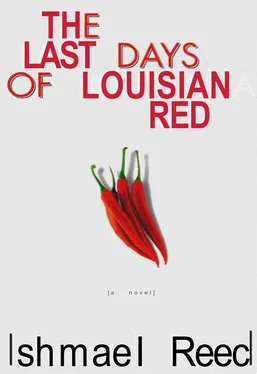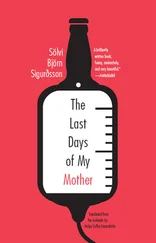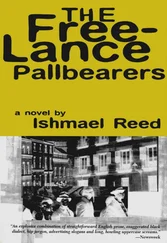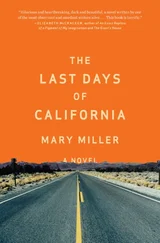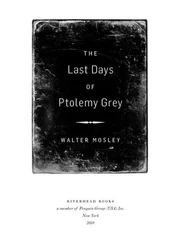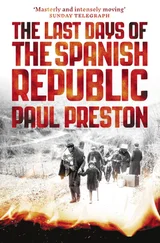Amos, lowering the pistol, stung: “But we came from Georgia together. ’39. Don’t you remember? We use to go fishing and sell the catch aside the road. Why, all the things we’ve done together, and you pull this?”
“That don’t matter. I don’t care nothing about the past. We is the future. We is the new world. Ain’t that right, Fish?”
“Now you talkin, Bro. Andy. Ain’t no use a you taking time to talk to this chump. Let’s rush him.”
“O no you don’t!” Amos raises the pistol; it clicks. “You always figured me for a patsy since I worked hard and I didn’t hang out on the avenue. All those fives I gave you. You thought you were tricking me, but I knew what I was doing. Always brother this, brother that. I should have known that it was always a hype. True brotherhood is not so casual. I’m going to call the police.” He walks over to the phone, all the while keeping the gun aimed at the two intruders.
“Why … why … Bro. Amos, you wouldn’t do that, would you? You must be on whitey’s side,” Fish says.
“Whitey’s side? How dare you confuse my struggle with yours? Who are my kind? Who are my people? Those who volunteer for the meanest tasks without fobbing them off on others. Those who when wrong don’t get mad at someone for pointing out their faults.”
“Aw, nigger, I ain’t heard nobody talk that way,” Andy says. “Kissass.”
“Shut up! How long did you think we would take this crap, Fish? You Moochers always intimidating us, extorting us because we’re the same skin color; even insects and animals have a higher criterion than that for comradeship. It was just another protection racket, but we ain’t going to be your old man in the candy store any longer. I’m calling the police.”
Formerly Berkeley was called “The City of Many Churches.” It still is, though not the kind Edward Rowland Sill, an early U. C. English professor, had in mind when he wrote the hymn “Send Down Thy Truth, O God.” Signs reading HooDoo were posted on the telegraph poles at Euclid Street near Hearst; Marcus Gordon had dressed up like Baron Samedi, top hat and all, at the Long Branch on San Pablo. At his Nyingma Institute, Tarthang Tulku, Tibetan Lama, led a session in meditation, exercise and philosophy. Cardadoc ap Cador and his pagans were conducting weekly meetings at 2 P.M. Sundays at Stiles Hall on the University of California campus. People were asking, Who Is Guru Maharaj Ji? Nam-myoho-renge-kyo was holding meetings at 79 °Curtis Street. Gypsies everywhere. Muhammad Speaks was sold in broad daylight. Shamballa. Asian Bean Pie. Nairobi College. Transcendental meditation lecture at Martin Luther King Jr. High School at 1781 Rose Street. Maggie Anthony, Isaac Bonewitz.
There is a full moon over the “City of Many Churches.” Midnite. Venus high. Cool empty streets. Trees whispering. A woman walked into Harry’s niteclub. It was the messenger. Full lips, sharp-edged “sculptured” nose, big bright Egyptian eyes. The messenger standing on the right-hand side of Osiris. When the messenger entered the club, the few patrons who were there on this cool Berkeley night looked up. Even the bartender, suave Obie Emerson, a connoisseur, looked up. Every time she entered a place, people looked up. She was smiling, fresh from the crossroads. She was wearing a white cloche hat, white suit, white high heels, and white veil. She wore the cross made of jet; not the cross of anguish and suffering but the traditional cross of American Business people: the Watson cross. She saw LaBas, who was beckoning to her, and joined him in a booth behind the fireplace. As soon as she was seated, they ordered. Judy, the waitress, brought them two long-stemmed glasses of rum; the messenger prepared to give her report; you see, LaBas maintained that only fools thought they knew everything, and therefore he would enlist someone from the other side who would check out information beyond his realm to verify. The messenger began her report with her characteristic broad smile.
“It’s some place. I didn’t think we were going to locate Ed at all until someone crossed my path and introduced me to Blue Coal’s scene; all of these ages in the service of the Business, and I’d never met the boss. It was a cabaret type place with entrances and exits formed of arcs formed by old trees. The host was one of these archaic nigger faces you see in Italian palaces of the Renaissance. You know, the ones with the bright red lips and shiny black faces. Art Deco nigger. Blue Coal tried hard to please me; he took me to a patio, and there, staring sadly out over a red lake, was Ed.
“When he saw me, he really became jubilant. Blue Coal was happy too in his rather guffawing manner, slapping me on the back, happy that you were leaving no stone unturned in your effort to solve the case. He seemed uninformed of what was going on in the Business; maybe he’s been on the job too long. He set up a cabaret to celebrate my locating Ed. There was some kind of floor show and the band played like Cab Calloway’s orchestra; you know, those dippy riffy 1932 woodwinds.”
“Cab Calloway! I’m doing research on one of his villainesses.”
“Really? Anyway, it was hot. Ed began to pump me for information. He reminisced. He talked about how he used to go to the Claremont Hotel to hear Count Basie.”
“That’s all very interesting. Did he say anything about industrial spies killing him?”
“They never say anything candidly there, Pop. Everything is said in riddles. Question marks decorate the cabaret, whirling above your head like mobiles. I’ll just have to report to you what he said. The key is Doc John.”
“O yes. Doc John the herbalist. Wolf told me of Ed’s interest in Doc John.”
Judy, the waitress, refreshed their drinks.
“Well, Ed sought out Doc John’s advocates who had fled across the river to Algiers after Doc John was murdered in New Orleans. They took his ideas with them, which Ed was able to compile. Actually, there were two Doc Johns. One of the primitive variety who wore loincloths and prophesied that Marie would replace Saloppeé, the dark-skinned queen of the Business and undisputed ruler who held rites down at Saint John Bayou. Saloppé was getting old and Marie was young, sassy and beautiful. But there was another catch to the prophecy.”
“What was that?”
“Well, the first Doc John said that Marie would reign but would be temporarily replaced by a man, but then after he passed she would reign again.
“Marie was a stunning creature. When she walked down South Ramparts Street, the carriages of gentlemen would halt and their masters would gaze at her. She knew the art of beauty because she ran three beauty parlors. She was rising in the New Orleans world of charms and was becoming somewhat of a poet. One Sunday she challenged Saloppé, and it wasn’t long before Marie replaced her. Saloppé was never the same after that and walked through the streets mad — rummaging garbage cans, subject of children’s ridicule.
“She gave a muted version of the old woman’s work. She went commercial with it. You see, the Americans didn’t want their women bowing down half-naked before those African loas; you know how they look and act. So when Marie took over the Business, Americans would come to Bayou Saint John to slum because they could stomach her version. Marie was yellow, and the American men loved yellow women. A yellow woman brought more money than a black, brown, or even a yellow man. To make it even more palatable, Marie replaced the African loas altogether and substituted Catholic saints. For example, Legba became Saint Peter, and you might be interested to know that LaBas is a creole version of Legba. Legba, Spirit of Communications; ‘Good for Business.’”
Читать дальше
